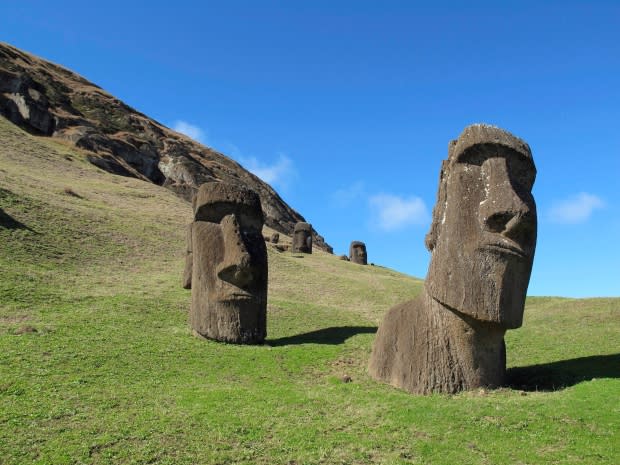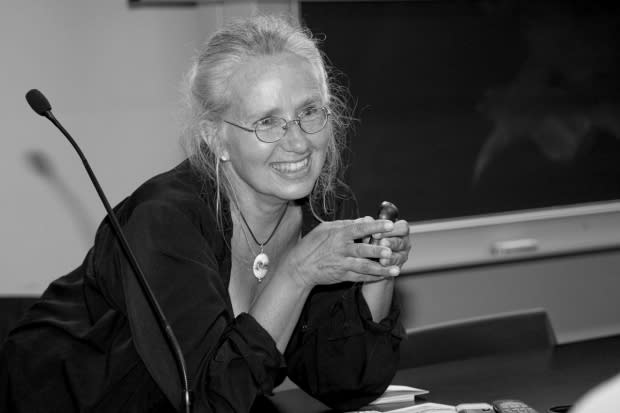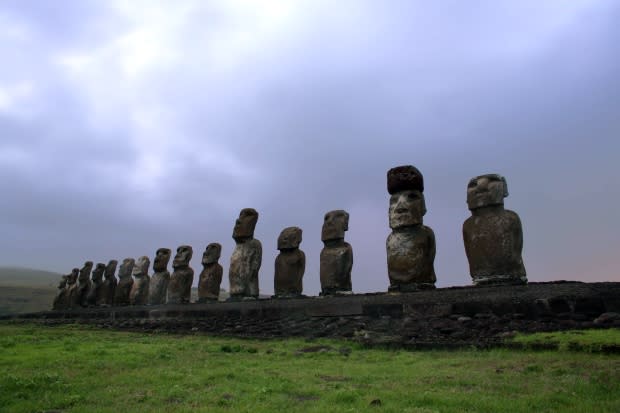The story behind a Cold War expedition from Halifax to Easter Island
In 1964, a team of young scientists sailed from Halifax to Easter Island on a groundbreaking research expedition that few people know about, until now.
Their three-month mission was an effort to document the Chilean island just years before an airport was set to open the isolated community to the world, but it didn't quite go as planned.
No final report was ever published and the stories of the 38 traveller-scientists were largely lost to history.
The island is known for the hundreds of towering stone Moai monuments that line its shores, some of which are three storeys.
The trip took place during the Cold War when the fear of nuclear explosion and radioactive fallout was ever present.
"Easter Island had been an object of fascination for a long, long time. Explorers had gone there, anthropologists had gone there, but tourists couldn't get there," historian Jacalyn Duffin told CBC's Information Morning.
She's the author of a new book about the trip, Stanley's Dream: The Canadian Medical Expedition to Easter Island.
The expedition was "an incredible feat," said Duffin. The scientists took everything with them, from portable trailers to generators so they could construct their own medical clinics on the island.

"There was a lot that unfolded on this trip. There were definitely romances. There were also animosities, quite a few, which might have been the reason why there was no final report," said Duffin.
"There could have been little Canadians born on the island for all we know, although in the end I didn't find any."
She said the Easter Island adventure was the first — and only — expedition of its kind in Canada.
Duffin has tracked down some of the people who took part, most of whom were young graduate students at the time, and even visited Easter Island herself.

What she discovered through interviews, artifacts and photographs is detailed in her book, which she's presenting at the University of King's College on Wednesday.
Stanley Skoryna, a gastroenterologist at McGill University in Montreal, led the mission. He wanted to study the isolated island's roughly 1,000 inhabitants, along with its plants, animals and microbes.
Halifax's role in the mission
To get everything to the island, Skoryna convinced the Canadian government to lend him a ship.
"Halifax has a big role to play in this story because he was able to convince the Canadian government to loan him a Royal Canadian Navy vessel, HMCS Cape Scott, which had been based here in Halifax and a full crew of over 200 sailors to convey the team of 38 scientists who went along with him," said Duffin.
The idea was to return for a second time after the airport was built in 1967 to see how the island coped, but that never happened.

"The island is full of mysteries and I discovered this project is full of mysteries too," said Duffin.
She said it's possible that friction among the group was the project's demise.
"[Skoryna] kind of lost interest because it was so frustrating for him to organize the results of all these scientists, so we haven't heard about it because there was no final report."
"I think the most amazing thing is that they did it at all, that they went to Easter Island, that everyone got home safely."

